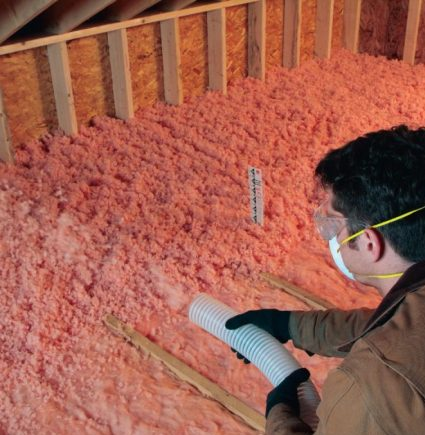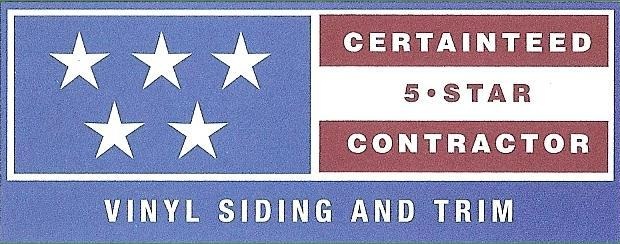
|
Phone: (800)497-9011


|
Fiberglass Insulation MI

Fiberglass Batt Insulation:
In the past 50 to 60 years, both builders and contractor alike have used mostly batt fiberglass insulation to insulate residential homes or office buildings. Insulating over 35 million homes, fiberglass insulation offers proof of the product's long-lasing, high-quality, performance. Making batt fiberglass insulation far and away the most used insulation of the past.
Blown-in Fiberglass Insulation:
Largely used for insulating attics as well as hollow wall cavities, it's made of spun glass fibers similar to that of fiberglass batt insulation, only the fibers are smaller in size, making it far more desirable because it's less itchy to work with. When it's blown into a wall or onto the floor of the attic space, it is commonly referred to as loose-fill fiberglass insulation. The R-value of blown fiberglass will increases with density and ranges from R-2.2 to R-4.2 per in. High densities also help to lower air- infiltration rates.
Fiberglass loose-fill is one of the cheapest and most commonly used types of insulation used today in order to build up the R-values in attic spaces. There is essentially no weight limit for installing fiberglass loose-fill onto an attic floor. In fact, a maximum R-78 fiberglass loose-fill insulation can be installed over 1/2 - inch drywall ceilings with framing 24 inches on center. However, to accommodate such a method of insulation the needed height of 16-24 in. under the roof is needed to substantiate recommended R- values. Dense packing fiberglass is effective only up to a point of about 4lbs per inch then the R-value reverses and begins to decline.
The U S Department of Energy has published a zone map, recommending and encouraging home owners to insulate their homes in accordance with it.
Get it done right:
Choosing the right insulation for a particular need is only half the battle when it comes to insulating a home or office. Blowing a bunch of insulation into the attic without taking into account proper preparation can be more harmful then helpful. Having an understanding of R-value, air flow and moisture control is critical to achieving desired results.
R-value:
The R-value is a measure of thermal resistance used in the building and construction industry. It is used to compare unit values of any particular building material, particularly the different types of insulation that can be used. Beware such insulation materials are tested in controlled environment without air flow or moisture that is commonly found in attics of residential homes. Controlling air flow and moisture in the attic is highly important to achieve the R-value performance indicated by the product labeling.
Attic Ventilation:
To simply follow good construction techniques or comply with the many building code requirements across the country, the rafter cavity between the roof deck and the insulation must be ventilated. The building code for Lower Michigan, upper Ohio and upper Indiana requires 1 square foot of vent area for every 150 square feet of attic floor area. If 50 percent of the vent area is near the ridge and the remainder is at the eave, the ratio is reduced to 1 square foot of vent area for every 300 square feet of attic floor area. However, with our field experience with ice damming on roofs, we highly recommend that building codes are used as the minimum and we strongly suggest having 100% of vent at the eaves and equal that amount at the ridge.
Attic Moisture:
To meet building code requirements in almost all areas of the country, and again simply to follow good construction technique, vapor retarders should be used were walls, floors or ceilings meet with the exterior of the building envelope. Fiberglass batt insulation is available with both foil and craft paper vapor retarders, designed to provide a low permeability keeping the moisture absorption low in the insulation. Loose-fill insulation has no vapor retarders and if it is intended to be used exclusively, an independent installed vapor retarder will be necessary. The idea is to keep the insulation as dry as possible, because moisture ridden insulation loses R-value rapidly and of course the ability to insulate.
Fire Resistance:
Fiberglass insulation is made primarily from sand, an inherently non-combustible natural resource material. Therefore Fiberglass will not burn and require no fire retardant chemicals. However the kraft and foil facing commonly found on faced batts will burn, but are intended for non-exposed applications.
Safety & Health Issues:
Following simple work practices will ensure low exposure to airborne fibers for both the plant worker and the installer of fiberglass insulation. Studies conducted over the last five decades, involving tens of thousands of workers exposed to glass fibers, found no established relationship to cancer or any other diseases in plant workers or installers. There is no recognized potential harm to home owners residing in their residential homes that were insulated with fiberglass insulation.
|
||||||||||||||||||||||
|
|
||||||||||||||||||||||
|
||||||||||||||||||||||
|
|
||||||||||||||||||||||
| This website was created by Applied Computer Strategies | ||||||||||||||||||||||


